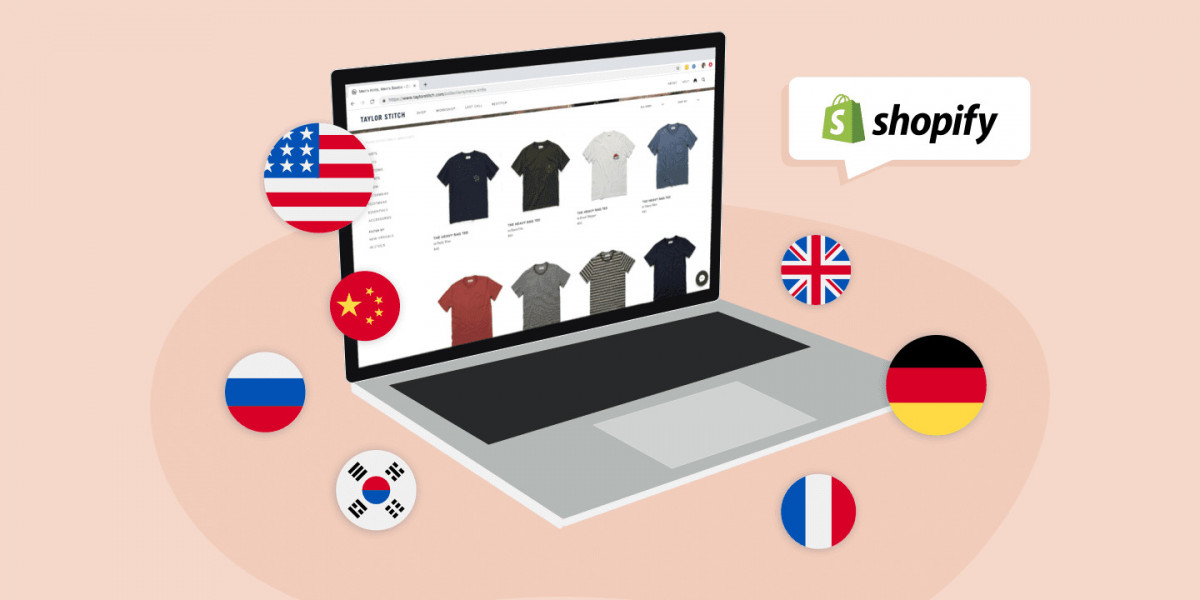More people are shopping online from around the world than ever before. If your clients’ apps or websites aren’t optimized for global audiences, they could miss out on customers—and lose potential revenue.
So, how do you make sure their product works everywhere? It all comes down to internationalization (i18n) and localization (l10n)—key steps to adapting content for different languages and cultures.
In this article, we’ll break down simple, practical tips from designers and developers to help you master global-friendly design. Let’s dive in!
Expanding your Shopify store globally is a great way to reach more customers and grow your business. However, selling internationally comes with challenges like language barriers, currency differences, and shipping complexities. This guide will help you set up your Shopify store for a global audience in a simple and practical way.
1. Choose the Right Shopify Plan
If you plan to sell worldwide, Shopify Advanced or Shopify Plus are the best options. These plans offer better international features, such as custom pricing for different regions, more currency options, and advanced analytics.
2. Set Up Multiple Languages
Want to make international shoppers feel comfortable buying from your store? It's simple - people prefer shopping in their own language! Luckily, Shopify makes it easy to translate your store using apps like Weglot or Langify. Just install an app, select the languages you need, and customize the translations (always have a native speaker check them - automatic translations can miss important nuances!).
If you're on Shopify Plus, consider partnering with a Shopify Plus agency - they're experts at handling translations and adapting your store for different markets. Remember, small language details matter - something as simple as "Add to Cart" might need different wording in different countries. Start with 2-3 key languages first, then expand as you grow. Your global customers will appreciate shopping in their native language.
Go to Settings > Languages in your Shopify dashboard.
Add new languages and translate key pages (homepage, product pages, checkout, etc.).
Use a language selector so customers can choose their preferred language.
3. Enable Multi-Currency Support
Showing prices in a customer’s local currency makes shopping easier. Shopify Payments lets you display prices in different currencies and convert them automatically based on the customer’s location. To enable multi-currency:
Go to Settings > Payments > Shopify Payments and turn on multiple currencies.
Set up automatic or manual currency conversion.
Display a currency selector on your store.
4. Optimize for International SEO
To attract customers from different countries, your store needs to rank well on search engines. Here are some key SEO tips for international stores:
Use hreflang tags to tell Google which language version to show to users.
Create country-specific domains or subdomains (e.g., us.yourstore.com for the U.S. and fr.yourstore.com for France).
Translate meta titles, descriptions, and URLs.
Focus on local keywords for different regions.
5. Offer Multiple Payment Options
Different countries prefer different payment methods. While credit cards are common in the U.S., customers in Germany prefer PayPal, and shoppers in China use Alipay. Make sure to:
Enable region-specific payment gateways.
Offer digital wallets like Apple Pay, Google Pay, and PayPal.
Allow local bank transfers where possible.
6. Adjust Pricing and Taxes for Each Country
When selling to customers around the world, it's important to remember that prices and taxes can differ from country to country. Getting this right is key to a smooth shopping experience and avoiding surprises at checkout. Thankfully, your Shopify platform makes this part of your shopify internationalization strategy much easier. You can set specific prices for different regions, automatically show or hide taxes based on where your customer is located, and ensure you correctly handle regulations like VAT for your European shoppers. Setting this up properly helps build trust and makes international shopping feel local and effortless.
7. Provide International Shipping Options
Shipping costs and times can vary a lot when selling internationally. To ensure a smooth process:
Use Shopify’s carrier-calculated shipping rates.
Partner with global shipping providers like DHL, FedEx, and UPS.
Offer multiple shipping options, including express and economy shipping.
Clearly display shipping costs and estimated delivery times at checkout.
8. Handle Duties and Import Taxes
Many customers abandon carts when they see unexpected import fees. You can:
Use Shopify Markets to collect import duties upfront.
Partner with a logistics provider that calculates duties at checkout.
Display tax and duty estimates on product pages.
9. Localize Customer Support
When you make your store welcoming to people from different countries, they are much more likely to trust you and make a purchase. A key part of successful Shopify internationalization is speaking your customer's language—literally.
This goes beyond just translating your product pages. You can build real confidence by offering customer support in their language, whether through live chat or email. Using AI-powered translation tools in your chatbots can help bridge the gap instantly. Another great step is creating clear return and policy pages that feel local and familiar to their region.
By taking these thoughtful steps, your Shopify internationalization strategy doesn’t just expand your reach—it builds trust and makes customers around the world feel right at home.
10. Create Region-Specific Marketing Campaigns
A one-size-fits-all approach won’t work in global markets. Tailor your marketing efforts:
Run Facebook and Google ads targeting specific countries.
Use local influencers to promote your brand.
Adjust promotions based on local holidays (e.g., Singles' Day in China, Black Friday in the U.S.).
11. Optimize for Mobile Users
Many international shoppers use mobile devices to browse and buy online. Ensure your Shopify store is:
Mobile-friendly and fast-loading.
Easy to navigate with a clear call-to-action (CTA).
Optimized for local payment methods and checkout experiences.
12. Monitor Analytics and Improve Performance
Understanding customer behavior from different countries helps you improve your store. Shopify provides powerful analytics tools to:
Track sales by region.
Identify top-performing products in different markets.
Improve user experience based on customer feedback.
Final Thoughts
Taking your online store global is a powerful way to grow your business, but it’s important to plan it thoughtfully. The process, often called Shopify internationalization, involves adapting your store to welcome customers from around the world.
This means making small but important changes: offering local languages and currencies, optimizing your SEO for different countries, and setting up clear shipping options and customer support. You don’t have to do everything at once. Start with a few key markets, test what works, and gradually expand your efforts.
With a careful approach to Shopify internationalization, you can create a seamless and friendly shopping experience for international customers, helping you attract a global audience and significantly increase your sales.














